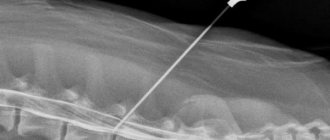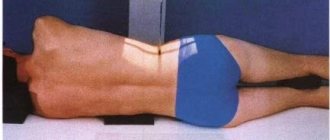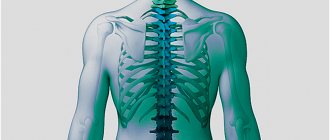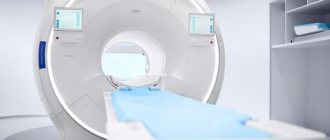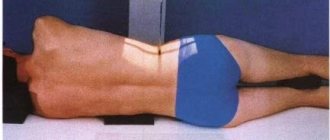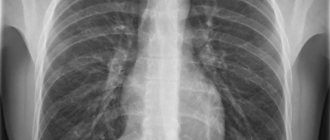Magnetic resonance imaging is a non-invasive method for instrumental diagnosis of diseases of the internal organs of the small pelvis, chest, abdominal cavity, brain and spinal cord, spine, circulatory system, etc. An excess of conflicting information about this type of research is the reason that patients, for the first time Those who come to an appointment at a medical clinic do not know whether it is scary to do an MRI, how painful the procedure is, what the consequences may be, etc.
Brain MRI results
Magnetic resonance imaging is based on the use of an induction field, which affects the movement of hydrogen molecules in the dipoles of water contained in the body's cells. The method does not have a negative impact on human health, scanning is painless and comfortable for the patient. The result of MRI is a series of layer-by-layer images of the studied area; reconstruction of a three-dimensional image is possible.
MRI and CT with and without contrast - what is the difference?
Check the possibility of treatment in this area at the moment
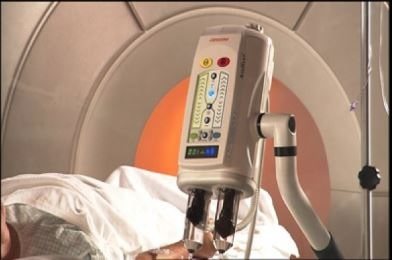
Magnetic resonance and computed tomography are considered the most informative, safe and fast diagnostic methods in modern medicine. With their help, pathologies of various organs and systems are identified, the condition of the body is monitored during the rehabilitation period, and congenital anomalies are found. At CDC-24 you can undergo examinations using new generation tomographs, including MRI and CT with and without contrast
. The difference lies in the need to use medications that are administered intravenously or orally. Enhanced examinations are safe, but require certain preparation and are done exclusively as prescribed by a specialist: cardiologist, neurologist, gastroenterologist, oncologist, traumatologist, etc.
Why is contrast used in MRI?
In most cases, diagnostics using radio waves and magnetic fields is sufficient to detect abnormalities in internal organs, joints, brain structures and the spine. But sometimes there is a need to obtain the most accurate and detailed image, and then the doctor recommends a contrast method. The injected substance influences the properties of water molecules in the area under study, thereby improving visualization and making it possible to find the smallest anomalies due to the amplified signal.
Some people think that the main difference between an MRI with and without contrast is
is that enhanced diagnostics are harmful, but conventional magnetic resonance imaging is not. In fact, both procedures are safe, and the substances used do not affect the body in any way; their purpose is to “illuminate” the picture. They are quickly eliminated from the body and do not cause a hypersensitivity reaction (with rare exceptions). As for adverse reactions, they occur infrequently and disappear within 1-2 hours - as a rule, they are a slight headache, rashes and dizziness.
Depending on the area under study, enhancer substances may differ in composition (with iron oxide, manganese compounds, gadolinium, etc.) and method of use. Most drugs are administered by intravenous injection, but when studying the state of the gastrointestinal tract, oral varieties are used.
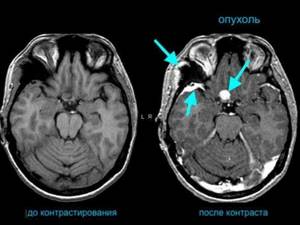
Does MRI without contrast show tumors?
It is possible to detect neoplasms without introducing special drugs into the patient’s body. However, in some cases, for example, with a small tumor or its complex location, amplification is required in order to most accurately determine the type and stage of the pathology. The study is also prescribed to determine malignancy and when deciding on surgical intervention.
Indications and contraindications
Enhanced MRI is performed on patients with suspected cancer, aneurysms, pituitary gland pathologies, as well as nerve damage and disorders of the cardiovascular system. Diagnostics allows us to identify necrotic lesions of soft tissues of any location, injuries of the musculo-ligamentous apparatus, diseases of the reproductive organs, lungs, liver, gallbladder and spleen, as well as degenerative changes in the central nervous system.
Indications for the examination include:
- convulsions, migraines, frequent fainting;
- decrease or loss of hearing, vision;
- palpable neoplasms in the neck area;
- arthrosis of joints, hernias, protrusions;
- multiple sclerosis;
- joint pain;
- muscle atrophy, paralysis, paresis of the lower and upper extremities;
- infectious lesions of the brain or spinal cord;
- neoplasms in the chest, pelvic organs and gastrointestinal tract;
- infertility in men and women.
There are no restrictions on the frequency of the procedure - it is prescribed as many times as required for effective treatment of the patient. Before conducting diagnostics at CDC-24, it is mandatory to check for contraindications, which include:
- pregnancy, regardless of trimester;
- individual intolerance to contrast agent;
- chronic heart failure;
- serious diseases of the kidneys and other organs of the urinary system;
- the presence of metal objects and devices in the body;
- fear of closed spaces.
MRI with and without contrast: which is better?
Both methods are effective and safe, and their differences are due to the use of drugs that enhance the signal. Compared to conventional magnetic resonance imaging, enhanced MRI:
- Lasts longer - the patient will have to stay 30-40 minutes longer inside the tomograph.
- Allows you to get more detailed pictures.
- May cause minor allergic reactions.
- Provides additional information about the state of the structures under study.
- Requires large financial costs.
- Assumes compliance with additional training recommendations.
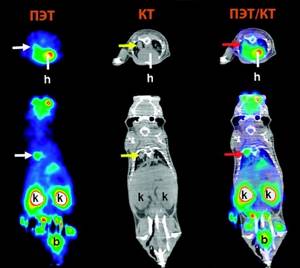
PET CT, CT with and without contrast: what studies show, what are their differences
If we are talking about injuries and diseases of dense structures, then patients are prescribed computed tomography and PET CT, and CT can also be performed with the introduction of a contrast agent. In the first case, the radiologist studies the anatomical features of organs and tissues, using signal-enhancing drugs if necessary, and in the second, he determines deviations in dynamics by examining functional activity. Positron emission tomography is considered the most advanced method and provides more information than CT with contrast. The disadvantages of the examination include its duration (and the patient must remain motionless during the entire diagnosis) and high cost.
Conclusion
To summarize, we can say that the difference between MRI, CT with and without contrast
lies in the quality of visualization. Enhanced examination makes it possible to detect pathologies at the initial stage and is indispensable in differential diagnosis. Most often, the procedure is performed on patients with cardiac, neurological symptoms, as well as malignant and benign neoplasms. When contrast is administered, the examination takes longer and in some cases may be accompanied by side effects.
Contraindications for MRI of three parts of the spine
Magnetic tomography is completely safe for the human body. However, some patients should still refuse the procedure.
Contraindications for diagnosis:
- overweight, obesity;
- progressive claustrophobia;
- inability to remain motionless and lying down for a long time;
- various metal and electronic devices in the patient’s body;
- mental disorders;
- epilepsy, seizures;
- pregnancy period (it is especially dangerous to carry out the procedure in the first trimester of pregnancy).
If you plan to use a contrast agent during scanning, it is necessary to monitor in advance for possible allergic reactions and other sensitivity to the effects. Contrast scans are also not indicated for people with kidney failure.
Computed tomography and MRI of three parts of the spine
Computed tomography (CT) is a way to get a three-dimensional view of the problem area of the body. This is the main difference from the magnetic resonance method. A three-dimensional image is obtained by taking several photographs at once, taken from different angles of view. The resulting images are processed by a computer program, which creates a picture in 3D format.
In what situations is CT indicated for patients:
- if necessary, examine disorders in bone and joint tissues;
- to identify and analyze traumatic brain injury;
- to determine pathologies of the spinal column (hernias, brittle bones, spinal deformity);
- to analyze the condition of blood vessels (for aneurysm, atherosclerosis);
- if necessary, examination of the chest, abdominal, and pelvic organs.
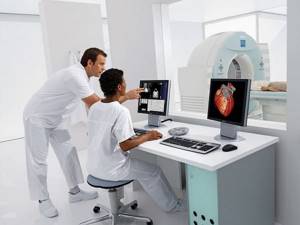
CT provides a clear image of stones, hollow tumors filled with fluid, and oncological tumors.
The main differences between MRI of the three parts of the spine:
- MRI is commonly used to analyze soft tissue, joints, and blood vessels;
- the procedure is necessary to identify or confirm the presence of tumors in tissues;
- examination of the nerves of the skull and parts of the brain;
- analysis of the condition of the meninges;
- the method is used to examine the brain after cases of circulatory disorders;
- magnetic tomography examines people with neurological disorders;
- using this method, the condition of the connective tissue cords that connect the bones and support the organs in their positions is analyzed, and the muscle tissue is examined;
- identify disorders of the health of joints and bones.
The CT method works better for pathologies of bone tissue and organs. MRI of three parts of the spine is used to identify diseases of muscles, tendons, synovial membranes, to examine connective tissue, blood vessels and nerves.
Computed tomography is a radiation exposure to the human body. However, modern devices make it possible to minimize the negative effects of rays. During diagnostics, the radiation does not last long, and this does not depend on the time of the session. For example, even with hour-long scans, the effect of the rays is minimal. MRI is a painless and safe procedure that, in the absence of contraindications, does not carry any side effects.
Nowadays, you no longer have to spend a lot of time performing complex and unpleasant procedures at home. It is much easier to seek help from real professionals - the Veronika Herba beauty and health center, equipped with effective and modern equipment.
Why clients choose Veronika Herba Beauty and Health Center:
- This is a beauty center where you can take care of yourself at a reasonable cost, while your face and/or body will be treated not by an ordinary cosmetologist, but by one of the best dermatologists in Moscow. This is a completely different, higher level of service!
- You can receive qualified help at any time convenient for you. The beauty center is open from 9:00 to 21:00, seven days a week. The main thing is to agree with your doctor in advance on the date and time of your appointment.
Sign up for a consultation with a specialist by phone +7 (495) 085-15-13
, and you will see for yourself!
How much does an MRI of three parts of the spine cost?
A magnetic tomography machine is a fairly expensive device, so not all public and private clinics can afford it. Due to the high cost of the tomograph, the price of MRI diagnostics is also high. However, this method gives the clearest picture of disorders and pathologies in the human body. The method allows you to see the problem in the early stages of its manifestation.
In a public clinic you can get a free MRI examination. To do this, you need to take a referral from your attending physician and stand in line for diagnostics. This waiting period can last several months. For many patients, such a loss of time is unacceptable, then you can contact a private clinic.
The approximate cost of a thoracic scan is 4,000 rubles. But for a complete picture, a photo of one department is usually not enough. For a more reliable result, MRI of three or four parts of the spine is used. The price will be quite high, but this study is extremely necessary to identify all pathologies.
Read material on the topic: Manual therapy of the cervical spine - features of the technique
What does an MRI of the three parts of the spine show?
The obtained images are analyzed by a radiologist or a functional diagnostics specialist. The current state of the spinal systems is compared with early photos or with a picture of a healthy spine. This is how the doctor identifies various disorders (hernia, osteochondrosis, etc.), their stage and effect on the body. Next, the possibility and type of treatment is determined.
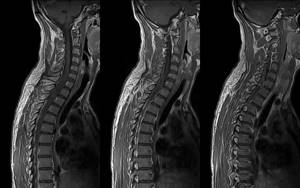
Magnetic tomography of the spine is an effective way to identify the problem and monitor it (for example, before and after surgery). The magnetic scanning method can be used repeatedly to make and clarify the diagnosis. The photographs clearly show the structure of bones, cartilage tissue (colored in a dark color), and the spinal cord (colored in a light color).
MRI of three parts of the spine and coccyx allows:
- see possible disturbances in the development of the spine, determine the extent of the injury;
- identify foci of inflammation, various neoplasms in tissues;
- assess the size of pathologies, as well as the type of disorder;
- analyze the condition of blood vessels, nerves and bone tissue;
- identify osteochondrosis, inflammatory processes in the spinal cord;
- determine the presence of a hernia (in the picture it looks like a protrusion of intervertebral discs, muscles, longitudinal ligaments).
Specialist giving a referral for an MRI
Scanning internal organs is a universal technology. It is preferred by doctors from various branches of medicine. Accordingly, a representative of any profile can recommend research. Which doctor will give the referral depends on the problem at hand.
The role of the tomograph is considered particularly important for diagnosis:
- oncological formations;
- diseases associated with blood vessels and the nervous system;
- joint pathologies and more.
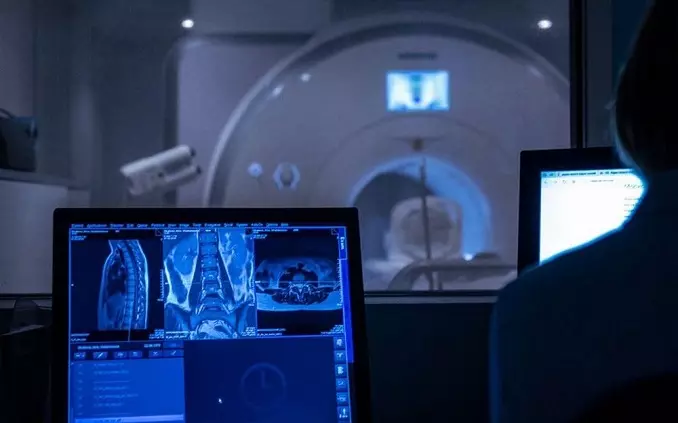
Most often, doctors from the fields of neurology, oncology, vertebology, traumatology, and angiosurgery are sent for scanning.
